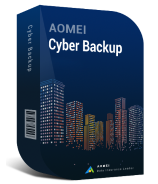Virtual machines (VMs) running on VMware ESXi often need to be backed up for disaster recovery or migration. A common method is to copy ESXi VMs to a USB drive. This method is portable and enables easy transfer of VMs between different ESXi hosts, protects critical VMs from ransomware or system failures, and also allows for quick recovery of VMs in the event of a hardware failure.
Methods to VMware ESXi Copy VM to USB Drive
Method 1: Manual Export via SSH/SCP (Command Line)
This method requires access to the ESXi host's command line.
Prerequisites
A USB drive with enough storage (formatted with a compatible file system like FAT32 or NTFS).
A tool like WinSCP (Windows) or SCP (Linux/macOS) for file transfer.
Step 1. Enable SSH on ESXi
Log in to the ESXi host via the web interface.
Navigate to Host > Actions > Services > Enable SSH.
Step 2. Locate VM Files
VM files are stored in:
📌Key files include:
.vmx (VM configuration)
.vmdk (virtual disk)
.nvram (BIOS settings)
Step 3. Connect USB Drive to ESXi
Plug in a USB drive (FAT32 or NTFS formatted).
Identify the USB device with:
Mount the USB (replace XXXX with your USB identifier):
mount /dev/disks/XXXX /mnt/usb
Step 4. Copy VM File to USB
Use cp or rsync to transfer files:
Step 5. Unmount USB
Method 2: Direct USB Controller Passthrough
Step 1. Enable PCI Passthrough
Access ESXi host > Hardware > PCI Devices.
Find your USB controller (e.g., Intel USB 3.0 eXtensible Host Controller)
Toggle passthrough > Reboot host if required.
Step 2. Assign to Windows/Linux VM
Edit VM settings > Add PCI Device > Select USB Controller
Power on VM – USB ports will now be controlled by the VM
Step 3. Copy VM Files
robocopy "\\ESXI_IP\VMFS\datastore1\VM" "E:\Backup" /MIR /Z /R:1 /W:1 /NP /LOG:C:\backup.log
# Linux
rsync -avzP /mnt/vmfs/VM/ /media/usb/backup/
Method 3. Use a Free and Agentless Software
AOMEI Cyber Backup is an efficient image-level backup freeware. It centrally backs up virtual machines in a tethered host to USB drives, local disks, network locations, and Amazon S3 in an agentless way. Also, it provides:
Ease of Use: The user-friendly interface makes it accessible even for those who might not be IT experts. You don’t have to be a backup guru to protect your ESXi environment.
Automated Backup: Schedule backups of your ESXi virtual machines, so you are always covered without having to remember to run them manually.
Fast Recovery: In case something does go wrong, it allows for quick restoration of your virtual machines, minimizing downtime and keeping your ESXi environment.
Multiple Storage Destinations: You can choose to backup to a local drive or network destinations like NAS.
Role Assignment: It allows one administrator to create sub-accounts with limited privileges.
Step 1. Download AOMEI Cyber Backup and open it, navigate to Source Device > VMware > + Add VMware Device to add vCenter or Standalone ESXi host as the source device. Enter the Device Information and User Information, then click Confirm.
Step 2. Navigate to Backup Task, and click + Create New Task. In the pop-up windows, click Select + next to Device Name to specify the ESXi host and the VMs you want to back up. Click OK to confirm.
Step 3. Click Select + next to Target and specify the USB drive as the destination storage. Then you can also specify a Backup Schedule for this task (daily/weekly/monthly).
Step 4. Click Start Backup to back up ESXi VMs to a USB drive.
Conclusion
Manually copying ESXi VMs to USB drives is possible, but not efficient for regular backups. AOMEI Cyber Backup provides a smarter, automated way to protect your VMs with minimal effort. Whether you need disaster recovery or VM migration, this tool ensures your data is safe and easy to recover.



